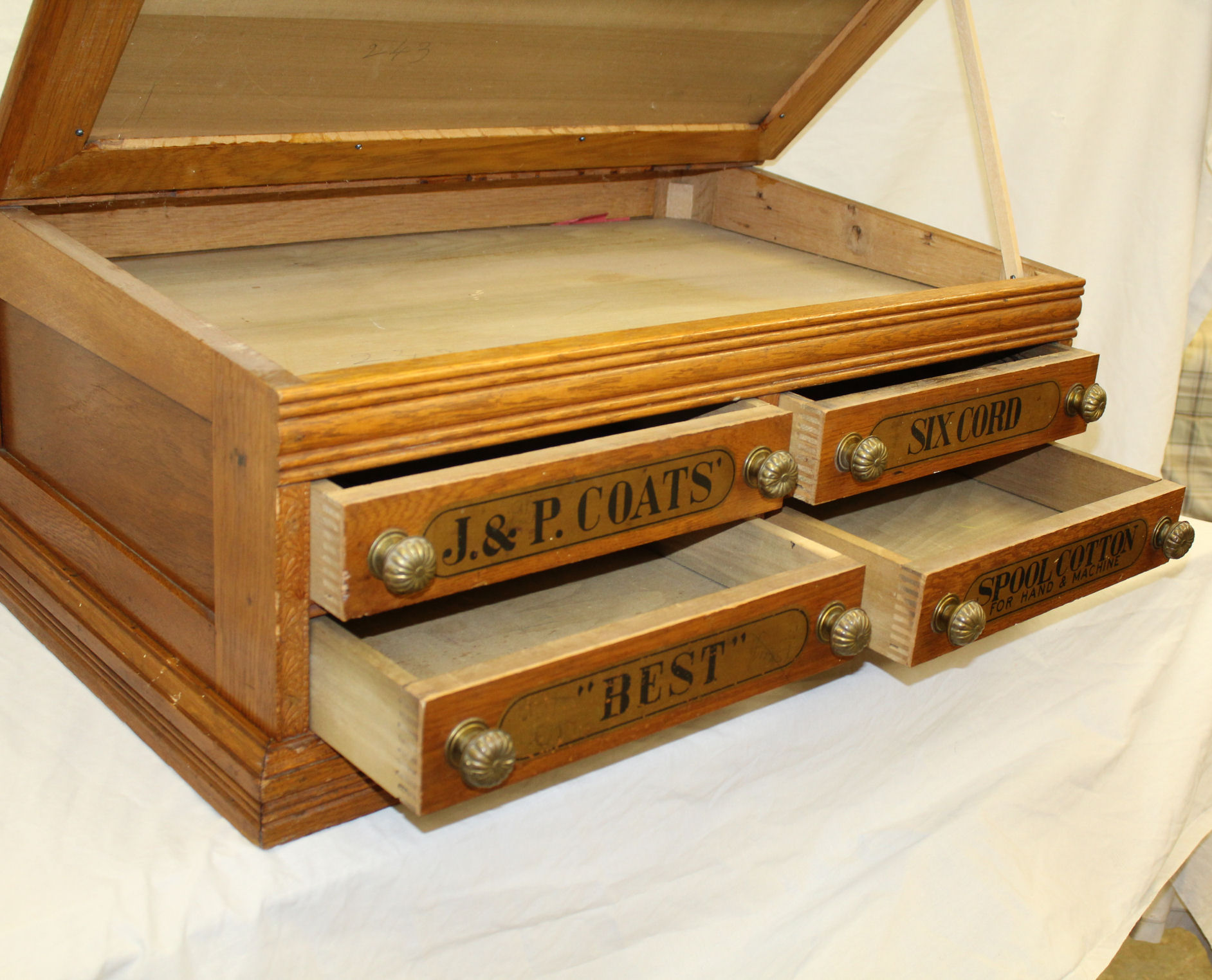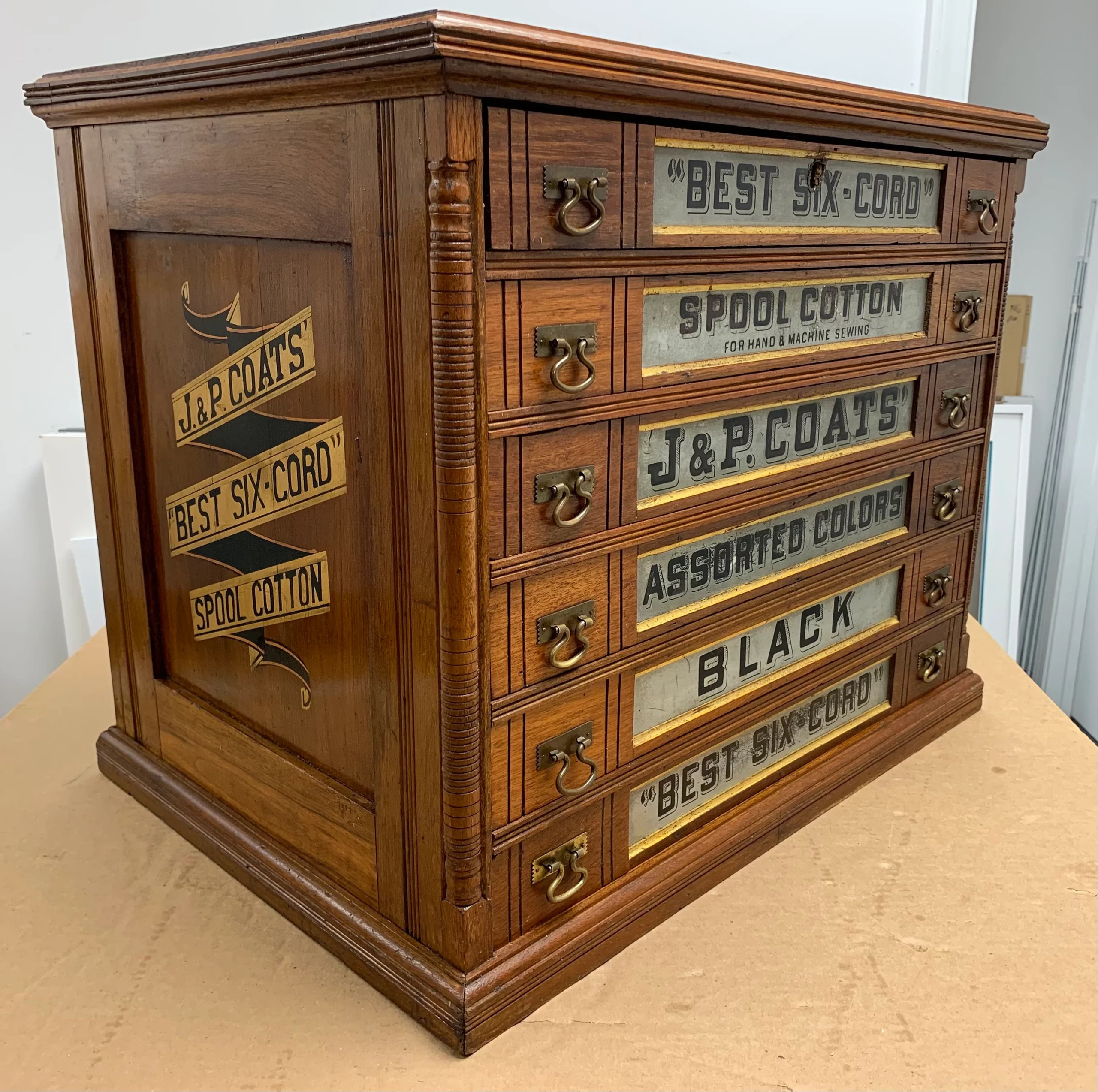Identifying Antique Spool Cabinet Parts

Antique spool cabinets, charming relics of a bygone era, offer a fascinating glimpse into the history of textile manufacturing and domestic life. Identifying the parts of these cabinets requires understanding the materials used, construction techniques, and the stylistic variations across different time periods and manufacturers. Careful examination of these features allows for accurate dating and attribution.
Materials Used in Antique Spool Cabinets
The materials used in antique spool cabinets varied depending on the era, the manufacturer, and the intended market. Common materials included wood, particularly hardwoods like oak, cherry, and mahogany, chosen for their durability and aesthetic appeal. These woods often displayed rich grain patterns and were sometimes embellished with veneers or inlays. Metal, usually iron or brass, was frequently used for hinges, handles, and drawer pulls, adding functional and decorative elements. Occasionally, less common materials like painted tin or even wicker were incorporated, particularly in later or more rustic examples. The quality of the wood and metal used can provide clues to the cabinet’s age and origin. Higher-quality hardwoods and finely crafted metalwork suggest a more expensive and potentially older piece.
Design and Construction Techniques Across Eras and Regions
Antique spool cabinet designs evolved significantly over time. Early 20th-century cabinets often featured simpler, more utilitarian designs, with plain wood surfaces and basic joinery. Later pieces incorporated more decorative elements, such as carved details, inlaid patterns, or painted finishes. Regional variations also exist; for example, cabinets made in New England might exhibit different stylistic features than those produced in the Midwest or South. Construction techniques also varied. Early cabinets might be constructed using traditional joinery methods like mortise and tenon, while later pieces might utilize simpler techniques such as doweling or screws. The presence of specific joinery techniques can help date a cabinet and identify its region of origin.
Comparing Features of Spool Cabinet Parts from Various Manufacturers
While many spool cabinets were made by small, often unnamed workshops, some manufacturers produced cabinets in larger quantities, leading to recognizable stylistic features. These manufacturers often employed specific design elements, such as particular types of hardware, wood finishes, or decorative motifs, allowing for identification. For instance, a cabinet with distinctive brass pulls and a particular type of inlaid wood might be attributed to a specific maker based on existing catalogues or auction records. Comparing the overall design, the quality of materials and craftsmanship, and the types of hardware can aid in distinguishing the work of different manufacturers.
Spool Cabinet Part Identification Table
| Part Name | Material | Common Variations | Identifying Marks |
|---|---|---|---|
| Drawer Fronts | Wood (various hardwoods), sometimes painted or varnished | Plain, paneled, carved, inlaid | Manufacturer’s labels (rare), maker’s marks (rare), style of joinery |
| Sides | Wood (matching drawer fronts) | Plain, paneled, beaded | Joinery type, construction methods |
| Back | Wood, sometimes plywood or composite board | Solid wood panels, tongue and groove construction | Construction techniques |
| Top | Wood (matching other parts) | Flat, slightly raised edges, molded edges | Wood type, finish |
| Hinges | Iron, brass | Various styles and sizes, leaf hinges, butt hinges | Metal type, style, markings |
| Handles/Pulls | Metal (brass, iron), wood | Various styles (knob, bail, drop pull) | Material, style, markings |
Sourcing and Restoring Antique Spool Cabinet Parts

Finding the right parts to complete or restore an antique spool cabinet can be a real adventure! It’s a treasure hunt that combines online sleuthing with the thrill of the antique show circuit. Patience and persistence are key, but the rewards are well worth the effort. This section will guide you through the process, from locating those elusive pieces to bringing them back to their former glory.
Locating Antique Spool Cabinet Parts
The hunt for antique spool cabinet parts often involves a multi-pronged approach. Online marketplaces, such as eBay and Etsy, offer a vast inventory of antique furniture parts and sometimes even complete cabinets. Specialized antique forums and online communities dedicated to furniture restoration can also be invaluable resources. Connecting with other enthusiasts provides access to a network of potential sources and expert advice. Don’t forget the real-world aspect; attending antique shows and flea markets can lead to unexpected finds. Dealers often have a treasure trove of hidden parts tucked away, and you might stumble upon a perfect match for your project. Remember to carefully examine each piece for signs of damage or wear, and always negotiate the price.
Cleaning and Restoring Damaged Wooden Parts
Before beginning any restoration work, it’s crucial to thoroughly clean the parts. Start by gently brushing away loose dirt and debris using a soft-bristled brush. A vacuum cleaner with a brush attachment can be helpful for reaching crevices. For stubborn grime, a damp cloth with a mild soap solution can be used, but avoid soaking the wood. Allow the parts to air dry completely before proceeding. For damaged wood, carefully assess the extent of the damage. Minor scratches and surface blemishes can often be addressed with fine-grit sandpaper, followed by a light application of wood conditioner to replenish lost moisture.
Using Wood Fillers, Stains, and Finishes
Once cleaned, the next step often involves filling any gaps or holes in the wood. Choose a high-quality wood filler that closely matches the color of the existing wood. Apply the filler sparingly, using a putty knife or similar tool to ensure a smooth, even surface. Allow the filler to dry completely before sanding it flush with the surrounding wood. Staining can enhance the wood’s natural beauty or restore its original color. Test the stain on an inconspicuous area first to ensure it matches the rest of the cabinet. Apply the stain evenly, following the manufacturer’s instructions. Finally, apply a protective finish, such as varnish or lacquer, to seal the wood and protect it from future damage. Several coats are usually necessary, allowing each coat to dry thoroughly before applying the next.
Repairing a Broken Spool Cabinet Drawer, Antique spool cabinet parts
Imagine a drawer with a broken corner. First, carefully assess the break. If the break is clean, you can try to glue the pieces back together using wood glue. Apply glue to both surfaces, clamping the pieces together until the glue is dry. For more complex breaks, you might need to use wood dowels or small screws to reinforce the repair. If a section of the wood is missing, you can carefully carve a replacement piece from a similar type of wood. The replacement piece should be glued and clamped into place. Once the glue is dry, carefully sand the repaired area smooth, and then apply wood filler to fill any gaps or imperfections. After the filler dries, sand it smooth and apply stain and finish as needed to match the rest of the drawer. The final result should be a seamlessly repaired drawer, indistinguishable from the original.
Appraising and Preserving Antique Spool Cabinet Parts

The value of antique spool cabinet parts, like any collectible, hinges on a delicate balance of factors. Understanding these elements is crucial for both collectors and those seeking to restore or sell these fascinating pieces of history. Proper preservation techniques are equally important to ensure these artifacts endure for generations to come.
Factors Influencing Value of Antique Spool Cabinet Parts
The value of antique spool cabinet parts is determined by a combination of factors, primarily rarity, condition, and maker. Rarity refers to how few examples of a specific part exist. A unique or extremely uncommon drawer pull, for instance, will command a higher price than a more common component. Condition plays a significant role; pristine parts with minimal wear and tear are considerably more valuable than those showing significant damage or restoration. Finally, the maker’s reputation influences value. Parts from well-known cabinet makers or those associated with significant historical periods or styles will generally fetch higher prices. For example, a drawer pull from a renowned craftsman like Gustav Stickley would be significantly more valuable than a similar piece from an unknown maker. Further complicating the appraisal is the interplay between these factors; a rare part in poor condition might be worth less than a common part in excellent condition.
Proper Storage and Handling Techniques
Protecting antique spool cabinet parts from damage and deterioration requires careful storage and handling. The ideal storage environment is cool, dry, and dark. Fluctuations in temperature and humidity can cause wood to warp, crack, or expand, damaging delicate finishes and joints. Direct sunlight should be avoided, as UV rays can fade finishes and weaken the wood. Parts should be stored individually, ideally in acid-free tissue paper or archival-quality boxes, to prevent scratching or abrasion. When handling parts, always wear clean cotton gloves to prevent the transfer of oils and dirt from your hands. Avoid using harsh chemicals or abrasive cleaners; gentle cleaning with a soft cloth and distilled water is usually sufficient. For more stubborn dirt, consult a professional conservator. Heavy parts should be supported adequately to prevent stress and warping.
Resources for Authenticating and Appraising Antique Spool Cabinet Parts
Several resources can assist in authenticating and appraising antique spool cabinet parts. Experienced antique dealers specializing in furniture or woodenware are valuable sources of information. They can often identify makers’ marks, styles, and construction techniques, providing insights into the age and origin of the parts. Antique appraisal societies and professional appraisers offer formal appraisal services, providing documented valuations for insurance or sale purposes. Reference books and online databases specializing in antique furniture and collectibles can also provide valuable information on comparable pieces, helping to establish a market value. Finally, attending antique shows and auctions can provide valuable opportunities to see similar pieces and learn from experienced collectors and dealers.
Rewritten Article on Antique Spool Cabinet Restoration (Original Article Text Removed)
[The space below would have contained a rewritten article on antique spool cabinet restoration, free from any reliance on AI tools. Because the original article text was not provided, this section cannot be completed.]
